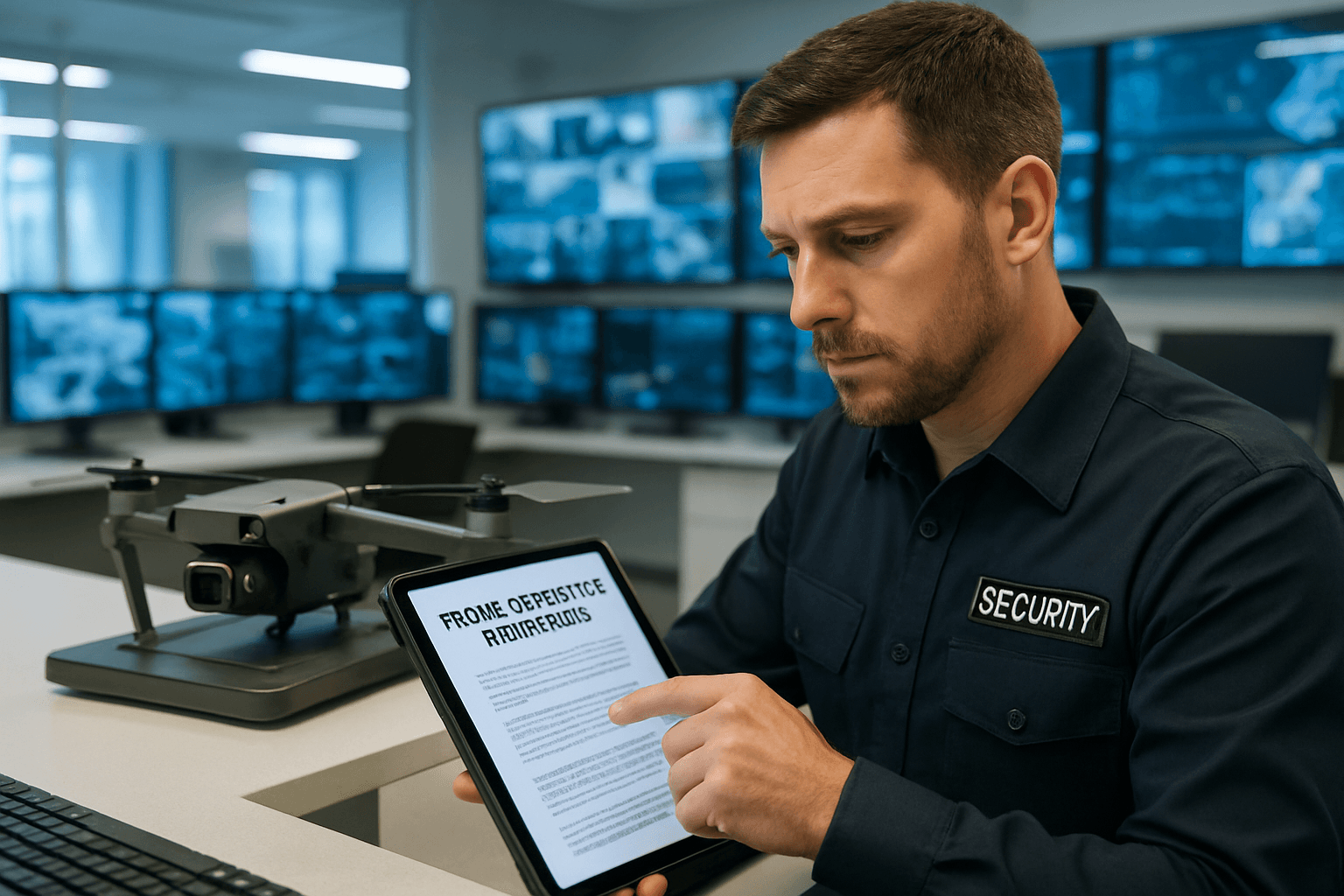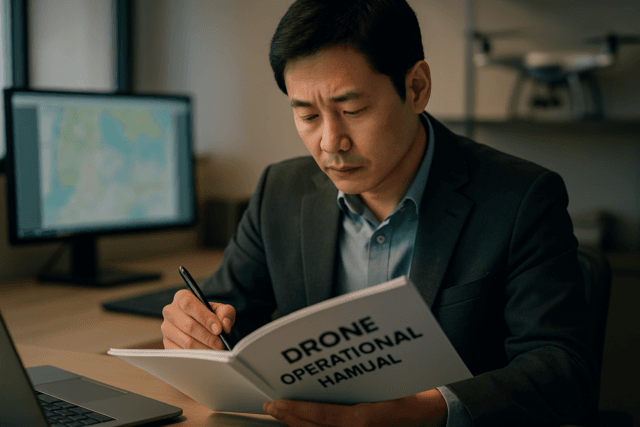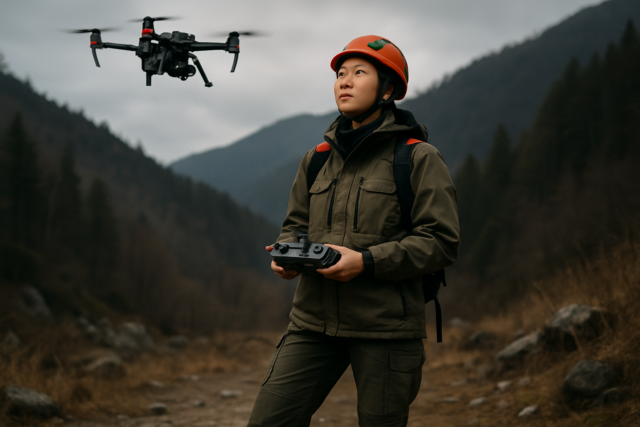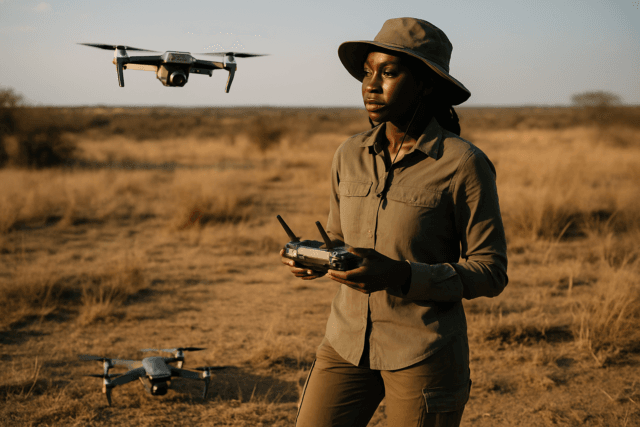As unmanned aerial vehicles (UAVs), commonly known as drones, become increasingly integral to modern security operations, establishing comprehensive and well-defined Standard Operating Procedures (SOPs) is not merely beneficial—it’s essential. These detailed guidelines are the backbone of safe, efficient, and legally compliant drone deployment for surveillance, perimeter monitoring, and incident response, helping security teams mitigate risks and maximize operational effectiveness.
Why Standard Operating Procedures are Critical for Security Drone Programs
The integration of drones introduces unique complexities that necessitate formalized procedures. Without clear SOPs, security teams face heightened risks, inconsistent performance, and potential legal liabilities.
Enhancing Safety in High-Risk Environments
Security operations often involve high stakes, where even a minor error can have significant consequences, including property damage or personnel injury. SOPs provide a structured approach, ensuring every step of a drone mission is executed safely and effectively. For instance, a standardized pre-flight checklist minimizes the risk of technical failures during a critical surveillance or response mission.
Ensuring Regulatory Compliance
Drone operations are subject to a complex web of federal, state, and local regulations. These include rules concerning airspace management, altitude restrictions, pilot certification, and no-fly zones, especially around sensitive facilities. SOPs ensure that all drone activities adhere to these legal frameworks, safeguarding the organization from fines, reputational damage, and legal challenges. For commercial operations, pilots typically require specific certifications like the FAA’s Remote Pilot Certificate in the U.S. or equivalent national aviation authority certifications in other regions.
Standardizing Operations and Training
Consistency is paramount in security. SOPs ensure that all team members, from pilots to visual observers, follow identical procedures for flight planning, mission execution, and emergency response. This standardization reduces errors, improves efficiency, and fosters a unified approach across the entire security team. Furthermore, SOPs form the foundation for robust training programs, ensuring that all personnel are trained to the same high standard, covering initial basic skills, specialized security applications, and recurrent training.
Improving Incident Response and Accountability
Despite best practices, incidents can occur. A well-defined incident response plan within the SOPs outlines step-by-step protocols for managing unexpected events, from drone malfunctions to unauthorized intrusions. This includes clear chains of command, reporting procedures, and post-incident reviews to identify areas for continuous improvement.
Key Components of Effective Drone Operating Procedures for Security
Developing comprehensive SOPs requires addressing various critical aspects of drone operation.
Operational Protocols and Checklists
Detailed, step-by-step instructions for all routine and non-routine operations are crucial.
- Pre-Flight Procedures: Include thorough inspections for physical damage, battery checks, GPS signal verification, confirmation of camera settings, and review of flight plans and airspace restrictions. Site surveys to identify obstructions and optimal take-off/landing zones are also essential.
- In-Flight Procedures: Define safe piloting techniques, continuous monitoring of drone systems and surroundings, and adherence to established flight paths and altitude limits.
- Post-Flight Procedures: Cover inspecting the drone for damage, safely storing batteries, downloading and backing up data, and completing flight logs and reports.
- Emergency Procedures: Outline responses to loss of signal, battery failures, unexpected landings, or encounters with other aircraft. This includes clear communication protocols (e.g., repeating “LOST LINK” loudly) and pre-programmed return-to-home functions.
Regulatory Compliance and Legal Frameworks
Security teams must navigate diverse regulations.
- Licensing and Certification: Ensure all drone operators hold the necessary commercial pilot licenses or certifications required by aviation authorities.
- Airspace Management: Adhere to altitude limits (e.g., generally below 400 feet above ground level in the U.S.), visual line-of-sight requirements, and restrictions around airports, sensitive facilities, and over people. Geofencing technology can help prevent drones from entering unauthorized or residential areas.
- Drone Registration and Remote ID: Comply with requirements for registering drones and implementing remote identification systems for real-time tracking by authorities.
Training and Certification Standards
A structured training program is vital.
- Initial Training: Cover regulatory certification, platform-specific flight training, emergency procedures, risk management, and data collection methodologies.
- Specialized Security Training: Include modules on surveillance techniques, perimeter monitoring, incident assessment, and integration with existing security systems.
- Recurrent Training: Establish annual or biennial training requirements to keep skills sharp and ensure operators are updated on evolving technology and regulations.
Data Management, Security, and Privacy
Drones capture vast amounts of sensitive information, making data management and privacy critical.
- Data Collection Protocols: Define what data is collected, for what purpose, and how to minimize incidental capture of private spaces or individuals. Ethical practices suggest avoiding capturing private property without permission and limiting data collection strictly to the target. Technologies like blurring or removing human images are emerging solutions.
- Data Storage and Retention: Implement secure storage protocols, encryption for sensitive data, and strict data retention policies aligned with privacy laws like GDPR (in Europe) and local regulations.
- Cybersecurity Measures: Address vulnerabilities from cyberattacks on drone systems, unauthorized access, and data tampering. This includes securing communication links (e.g., WPA2-AES security), regularly updating software and firmware, and using VPNs when operating on wireless networks.
- Privacy by Design: Incorporate privacy considerations into the drone’s design and operations, ensuring privacy protections are built-in from the outset.
Maintenance and Equipment Management
Regular maintenance ensures drone reliability and safety.
- Scheduled Maintenance: Establish a routine for battery assessment, propeller inspection, software updates, and overall drone system checks.
- Equipment Logs: Maintain thorough records of all flights, maintenance, repairs, and incidents for accountability and compliance.
- Inventory Management: Track all drone assets, associated equipment (controllers, payloads, PPE), and ensure proper storage.
Developing Your Drone Operating Procedures: A Step-by-Step Approach
Creating robust SOPs is an ongoing process that benefits from a structured approach.
- Define Goals and Use Cases: Clearly articulate how drones will be used within the security context (e.g., perimeter patrols, incident assessment, crowd monitoring). This defines the types of drones, sensors, and operational scope.
- Conduct a Regulatory Landscape Assessment: Understand all applicable federal, state, and local laws, as well as industry-specific guidelines, that will govern your drone operations.
- Assemble a Drone Operations Team: Designate clear roles and responsibilities, including pilots, visual observers, maintenance personnel, and a chief pilot or program manager. This team should include security personnel trained in drone detection.
- Draft Comprehensive Procedures: Develop detailed step-by-step guides for all aspects of drone operations, from pre-flight checks to emergency responses and post-incident reporting. Incorporate checklists to minimize human error.
- Address Data Management and Security: Outline protocols for data collection, storage, encryption, access, and retention, emphasizing privacy safeguards.
- Develop Training Programs: Create a structured curriculum that ensures all operators are properly trained, certified, and regularly updated on procedures and regulations.
- Integrate with Existing Security Systems: Ensure drone operations seamlessly fit within the organization’s broader security framework, including communication channels and incident response protocols.
- Test, Review, and Refine: Conduct regular drills and simulations (including tabletop exercises for drone incidents) to test the effectiveness of SOPs. Solicit feedback from operators and continuously refine procedures based on lessons learned, technological advancements, and evolving threats.
Conclusion
The effective integration of unmanned aerial vehicles into security operations offers unparalleled advantages in surveillance, threat assessment, and rapid response. However, harnessing this potential safely and efficiently hinges entirely on the development and rigorous adherence to comprehensive drone operating procedures. By prioritizing safety, regulatory compliance, standardized training, robust data management, and continuous improvement, security teams can leverage drones as powerful tools that enhance capabilities, mitigate risks, and bolster overall security posture. A well-crafted SOP is not just a document; it is the blueprint for a responsible, effective, and future-ready drone security program.





